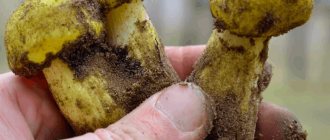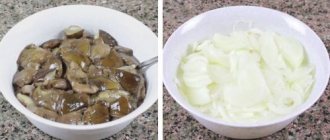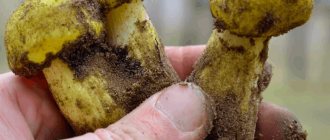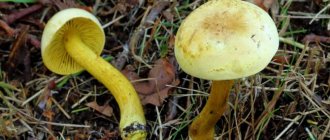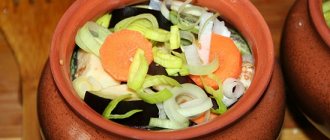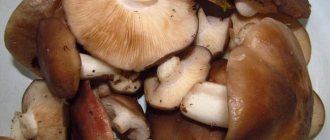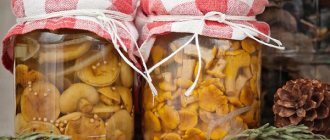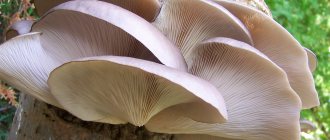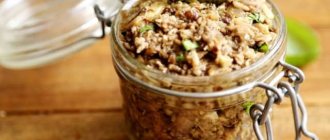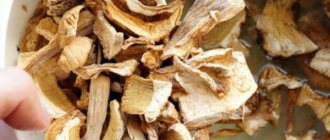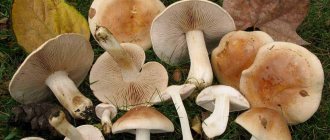Mushrooms are a valuable gift of nature. People have long called them forest meat. There are more than 100,000 species of mushrooms and not all of them are edible. Among those that can be eaten, there are edible and conditionally edible. It is very important to be able to properly prepare forest gifts so that eating the long-awaited autumn dish does not land you in a hospital bed. Learn how to properly cook green mushrooms.
How to clean dirt from mushrooms?
The mushrooms that you will use for frying should be scraped with a small sharp knife if they are heavily soiled, and then wiped with a napkin. If wild mushrooms are very dirty, you can quickly (5-10 seconds) rinse with water and dry with a towel.
Interesting materials:
How to wash black linen in a machine? How to wash black linen? How to wash black cotton? How to wash black knitwear? How to wash pure woolen items? How to wash without shrinking? How to wash clothes to make them shrink? How to wash to make pants fit? How to wash so that the fabric shrinks? How to wash compression stockings for varicose veins?
How to cook green mushrooms: how long to cook them?
Every person, even not an admirer of quiet hunting, knows that forest mushrooms require more thorough heat treatment than champignons or mushrooms. How long to cook green mushrooms? The duration of their heat treatment varies from 15 to 20 minutes. Although in some cases the cooking process may take twice as long if they are boiled twice.
Before cooking, any mushrooms need to be prepared, and special attention should be paid to forest products. Greenfinches got their name due to their unusual shade. Some people colloquially call them brilliant green. But after cleaning, the green pigment disappears a little, and the mushrooms acquire a rich beige hue.
On a note! Immediately after collection, greenfinches are divided into caps and stems separately. The lower part of the legs just above the cut must be removed.
Now it’s time to talk about the features of preparing greenfinches for heat treatment. These mushrooms grow mainly on sandy soil, so you shouldn’t be surprised that they have a lot of sand on them. First of all, wash the greenfinches by placing them under running water.
Next, the mushrooms are transferred to a convenient container, poured with warm water and left for 10-12 hours. After the allotted time has passed, the greenberries should be washed again and placed in a basin. Most mushroom pickers are in no hurry to cook green mushrooms; they prefer to soak them again in salted water.
Advice! To prepare a saline solution, consider the following proportions: for 1 liter of filtered liquid, take approximately one tablespoon of salt.
The greenfinches are kept in a saline solution for several hours, and then they are thoroughly washed again. Try literally shaking the water in which the greenfinches lie. This way you can completely remove the sand.
But after such preparatory procedures, you can boil the mushrooms. This condition is mandatory if you plan to pickle greenfinches or eat them boiled. By the way, most people prefer to thoroughly boil the mushrooms before frying. How long should you cook green mushrooms before frying? A quarter of an hour is enough. Then you will have to devote another 10-15 minutes to frying. Although some mushroom pickers believe that high-quality peeled green mushrooms can be fried raw. In this case, heat treatment lasts at least a third of an hour.
Mushrooms are also delicious in sour cream sauce. It is advisable to boil them before stewing. The final stage of heat treatment takes 15-20 minutes.
The most common way to prepare greenfinches is to marinate them. Before this, the mushrooms must be cleaned, soaked and boiled. The classic marinade is prepared from only four components - filtered water, salt, table vinegar and granulated sugar.
Advice! Add the vinegar at the very end, and then add the mushrooms to the marinade.
When canned, greenfinches are stored for quite a long time in a cool room or refrigerator.
Pickling blanched mushrooms
If you are categorically against vinegar, then you can salt the greenfinch without it.
Ingredients:
- processed greenfinches - 1 kg
- coarse salt - 400 g
- peppercorns - 6 -7 pcs.
- garlic - 3 - 5 cloves
- cherry leaves - 3 - 5 pcs.
How to cook:
- If you can use caps with a stem when pickling, then with this method it is better to cut the stem at a distance of 0.5 cm from the cap.
- Pour water into a wide saucepan and bring to a boil.
- Place the row prepared for pickling in a colander, place it in boiling water, and blanch for 5 - 7 minutes. Then cool quickly under running cold water.
- Place the cooled mushrooms tightly in a saucepan or bucket, caps down, in small layers. Sprinkle each layer with salt, observing the proportions, add garlic, pepper, cherry leaves. You can add bay leaf, dry dill and other spices you like.
- Cover the last row with a cotton napkin, place an inverted plate, place a weight (optionally, a jar of water) and place it in a cool place.
After some time, the greenfinches will give juice and it is important to make sure that they are always in the brine; if suddenly there is not enough of it, add boiled water. The row is salted in this way for 10 - 15 days.
How else can you cook greenberries? Of course, fry!
Boiling time
In principle, the duration of boiling greenfinches does not depend on what exactly will be cooked from them later. The exception is subsequent frying. In this case, just bring the mushrooms to a boil and cook for a couple of minutes.
For sand removal
Some housewives prefer cooking Ryadovka green to soaking to remove sand. Sequence of processes:
- The mushrooms are washed properly under running water.
- Place in a pan with a volume three times the amount of greenfinches.
- Stirring for the first time, bring to a boil and drain in a colander.
- Rinse thoroughly and put back into the pan.
- Pour in cold water and bring to a boil.
- Cook green mushrooms until tender for no more than 20 minutes.
Before frying
If you plan to fry forest fruits, then you only need to cook the green mushrooms for a very short time. Fill the mushrooms, previously cleared of sand, with cold water and put on fire. As the water heats up and approaches boiling, foam will form on the surface. It needs to be removed. This can be done with a slotted spoon or a simple tablespoon.
As soon as the mushrooms in the pan boil, you need to do the following:
- Turn down the heat.
- Skim off any remaining foam.
- Let cook for 1-2 minutes and turn off the heat.
- Drain the contents of the pan into a colander.
- Rinse the mushrooms with cold water and let drain.
Next, simply place the greenberries in a preheated frying pan with vegetable oil and salt to taste. This dish is very good to prepare and eat with boiled potatoes and other side dishes.
Frozen greenfinches
Cooking frozen mushrooms is essentially no different from heat treatment of fresh forest products. The main secret here is that green mushrooms must first be thawed and washed. And then cook exactly like fresh mushrooms.
For further preparation and consumption
You can prepare many delicious dishes from greenfinches. Mushrooms are salted, pickled, fried, stewed in sour cream, soups are made from them, caviar is made, fillings for pies, dumplings and cabbage rolls.
The boiling process before directly preparing any of the dishes may differ only in time and volume of water:
- if you decide to marinate greenfinches, then you need to boil them in a small amount of salted water for a quarter of an hour;
- when preparing mushrooms for pickling, the same principle of boiling applies, but without salt;
- to prepare soups, green flowers must be thoroughly washed and soaked in cold water to remove the sand;
- Greenfinches can be frozen for the winter: to do this, you need to boil them for 10-15 minutes in salted water (prepare as usual), then put them in containers and put them in the freezer.
Important! If you cook green mushrooms for 15-20 minutes, drain all the mushroom broth and cook the soup in fresh water, there will be no harmful substances left in it.
Boiling mushrooms before preparing various dishes is an important step that will help not only clear forest products of debris, but also protect lovers of quiet hunting from undesirable consequences in the form of poisoning of varying degrees.
Recipe for green mushroom cutlets
Pork and green meat cutlets
Helpful Tips:
- To bind greenfinch cutlets, add soaked stale bread, an egg, crushed oatmeal, boiled rice, and semolina.
- Minced greenfinches can be mixed in half with minced potatoes or minced meat.
- Wild mushrooms quickly deteriorate; they cannot be stored unprocessed for more than a day, even in a cold place.
- Cutlets can also be prepared from salted or pickled greenfinches, but then you need to put less salt in the cutlets.
- Due to the large amount of fiber, mushroom stems are less digestible in the stomach than mushroom caps; they can be ground in a meat grinder into cutlets.
Pork and green meat cutlets
For cutlets you need:
- 1 kg meat
- 300 g greenfinches
- 2 medium onions
- 2-3 tbsp. spoons of sour cream
- 1 tbsp. spoon of flour
- 2 cloves garlic
- 1 bunch of parsley
- Salt and ground black pepper to your taste
- Vegetable oil for frying cutlets
Let's start cooking:
- We pass the meat, green mushrooms, onions and parsley through a meat grinder.
- Mix the minced meat, add salt and pepper.
- We form oblong cutlets and fry in oil.
- Prepare sour cream sauce. We dilute the sour cream with water 1:2, add flour, salt, ground black pepper, chopped garlic, and let it boil.
- Dip the fried cutlets into the sauce and simmer for 2-4 minutes.
So, using the above examples, we were convinced that you can prepare various delicious dishes from a row (green grass, green grass) and diversify your table.
Freezing
Greenfinches tolerate storage well in the freezer. Freezing is carried out in 2 ways:
- Prepared and boiled mushrooms are cut into small pieces and sent into bags in portions. In winter, they are taken out, doused with boiling water and immediately added to soups and salads. The shelf life of boiled rows in bags is 4-5 months.
- Raw prepared mushrooms are packaged whole in small bags. This type of workpiece is more suitable for frying as a whole. Raw frozen pulp is suitable for consumption for 6-9 months.
Attention! Mushrooms cannot be re-frozen, so they are packaged in small portions of 300-500 g.
Where and when do they grow?
Greenfinches can be found in the northern forest zone. She prefers to settle in dry pine forests, on sandy and sandy loam soils. They can rarely be found in deciduous forests. They go “hunting” for them at the end of summer, when the amount of precipitation increases. The sand becomes wet and the mycelium “wakes up.”
The first greenfinches are found in early August, the last - in mid-September. But, if the Indian summer drags on, individual mushrooms can be found in November. They grow singly or in small groups of 5-8 pieces. The mushroom is almost never wormy.
Is it possible to grow this type of mushroom yourself?
Greenfinches are usually not cultivated at home because:
- they are inferior in yield to oyster mushrooms;
- they are difficult to clean, not every housewife wants to tinker with them;
- the presence of a toxin in their composition does not make them more popular among mushroom growers.
But there are also admirers of this type of mushroom who grow them on their own plot. Seed material is purchased in the store, but it is rare.
Before sowing, the mycelium is mixed with sand or dry soil. They loosen the soil under the tree and make holes 5–15 cm deep, depending on how the roots of the trees are located towards the soil surface. The mycelium is evenly scattered and covered with forest soil, to which humus is added (1:1). Water well with water from a watering can and sprinkle with soil that remains after digging holes.
Planting is carried out in spring or summer under coniferous trees, preferably under young pines or spruces. In hot weather, water the plantation regularly. The greenfinch mycelium is a long-lived plant and will continue to grow until the tree dies.
So, although greenfinch is not very popular among mushroom pickers, it is used in cooking. Before processing, they should be thoroughly cleaned of debris and sand, and then boiled. Mushrooms are used for preservation. When pickled, the mushroom caps turn brown or olive-colored. When boiled, the color of the flesh intensifies and they become greener.
0
0
Copy link
Useful properties and calorie content
Podzelenka, or gray row, has many other names: pine pine, streaked row, strange row, gray sandpiper, gray sandpiper, svinushka, mouse mushrooms. Latin name: Tricholoma portentosum. The fungus is found throughout the European temperate zone, in the southern regions and Western Siberia. Fruits from autumn until winter frosts.
Greens contain vitamins and other valuable microelements: vitamins B, PP, A, manganese, copper and zinc, ergosterol and stearic acid. Useful properties of earrings:
- the high amount of protein allows those who watch their weight and athletes to consume greens;
- contains a small amount of an antibiotic, which is used in the treatment of tuberculosis;
- in the old days, green grass was used to combat viral and seasonal diseases;
- reduces glucose levels, used to create drugs to control hypoglycemia;
- has immunomodulatory and anti-inflammatory properties;
- helps fight fatigue and exhaustion.
The calorie content of greens is only 19 kcal per 100 grams of product.
Reference! For external use, decoctions of baby mice (sulfur row) are used in the treatment of skin diseases. Lotions eliminate itching, redness, and improve skin condition.
No. 7. Mushroom soup
To prepare the soup you need the following ingredients:
- potatoes – 500 g;
- green row – 500 g;
- sour cream – 0.5 cups;
- lemon juice – 1 tbsp. spoon;
- bay leaf – 1 pc.;
- dill, parsley – 4-5 sprigs;
- spices (black pepper, allspice) and salt - to taste;
- butter.
How to prepare delicious greenery soup:
- Cut the prepared mushrooms into pieces. The slices should not be very small, because they shrink when frying.
- Fry the mushrooms in oil for 15 minutes.
- Peel the potatoes, cut into cubes, place in boiling water and cook for 15 minutes.
- Transfer the fried greenfinches to the potatoes and boil for another 10 minutes.
- While everything is cooking, mix sour cream with lemon juice and at the end of cooking, put it in a saucepan, add salt and pepper.
- As soon as the soup boils, immediately turn off the heat.
- Serve the dish sprinkled with herbs.
Attention. Cooked greenfinches are a tasty and satisfying dish. But this is difficult food for the stomach, so people with digestive problems should avoid mushrooms.
Pickled greenfinches
A tasty and easy way to prepare mushrooms and greenfinches, including marinating in jars with vinegar.
Ingredients:
- processed greenfinches - 1 kg
- coarse salt - 30 g
- water - 200 ml
- sugar - 1 tsp.
- acetic acid (70%) - 1 tsp.
- peppercorns - 5 - 6 pcs
- citric acid - on the tip of a knife
- garlic - 3 - 4 cloves
Recipe:
There are usually more than a kilogram of mushrooms for canning, but I specifically gave the recipe for a small volume. This makes it more convenient to calculate the amount of ingredients by the weight of your mushrooms: if you have 3 kg, multiply everything by 3, and if you have 10 kg, then multiply by 10, respectively.
- Pour the required amount of water according to the recipe into a saucepan, add salt, mushrooms and cook over medium heat. There is not enough liquid in the pack, they need to be stirred so that they do not burn. Don’t be confused by the fact that there is not enough water, the greenfinches will quickly give up their juice and there will be enough marinade.
- When the marinade begins to lighten, foaming stops and the mushrooms begin to settle to the bottom (after about 25 - 30 minutes), add the remaining ingredients - sugar, acetic acid, peppercorns, chopped garlic, citric acid. Boil for 5 minutes.
- Place hot in pre-sterilized jars and it is important that the greenfinches in the jars are in the marinade. Therefore, when laying them, you do not need to compact them, but after spreading out the mushrooms, add the marinade so that it covers them completely. Cover with sterile lids and place in a cool place. Store pickled greens only in a cool place.
When you open the jar in winter, the taste can be adjusted if, for example, the greenberries seem sour to you. A portion of mushrooms can be washed with boiled water, add a little sugar and vegetable oil. If you are satisfied with the taste of the green mushrooms, I still recommend adding a little vegetable oil before serving; the mushrooms will taste better and look more appetizing.
The benefits and harms of mushrooms
The beneficial properties of greenfinch are easily explained by its impressive composition of nutrients. But when consuming mushrooms, moderation must be observed. Mushrooms contain substances that suppress pathogenic microflora, in particular staphylococci, thin the blood and cleanse it, and normalize the functioning of the cardiovascular system. Greenfinches have an effect on bone tissue, strengthening it, and the digestive system, improving intestinal motility.
Despite the fact that the mushroom is edible, several cases of fatal poisoning have been recorded. The reason was overeating greenfinches. Do not forget that they contain a toxin that destroys muscle tissue. Long-term consumption of mushrooms has a negative impact on health:
- muscle weakness is observed, which is expressed in rapid involuntary contraction of the limbs;
- disorders of the cardiovascular system occur;
- liver cells are destroyed;
- there is a malfunction of the kidneys.
The main specter of toxin poisoning is a change in urine color. It turns dark brown. You should immediately seek help from a doctor and exclude the product from your diet.
Greenfinch is also often found near highways or in industrial areas. Mushrooms absorb toxic substances and heavy metals from the environment. After eating such mushrooms, a gourmet will not escape severe poisoning. Signs of poisoning include impaired renal function, renal failure, and irritation of the bladder mucosa. Therefore, any mushrooms should be collected in environmentally friendly areas.
Some information about greenfinches: how to collect them, how to pickle them for the winter
October is already coming to an end, and the mushroom picking period is coming to an end. I remember how my grandmother and I went to the forest to pick mushrooms around this time and collected beautiful green mushrooms, and then salted them in jars for the whole next winter. This is forever etched in my memory - early morning, frosty coolness, light frost on the grass, but not yet frost, crystal ringing air, creaking pines and greenfinches on hillocks in the sand.
Green mushrooms, green mushrooms, and we simply called them yellow mushrooms because of their characteristic yellow-green color, are very edible and very tasty mushrooms: many mushroom pickers do not respect them. And in vain. You need to be able to collect greenfinches and then process them correctly.
Zelenka (greenfinch) is a mushroom representative of the extensive family of rowanaceae. They also have the name yellow-green row, green row and have a wide variety of their fellows: yellow-red, white, orange, purple, gray streaked and many others. The encyclopedia says there are about 2,500 species. Among the rows there are also poisonous mushrooms.
Marinated butter, recipe
If you have never collected them, study in detail the manuals for mushroom pickers, never collect suspicious mushrooms and once again consult with experienced lovers of quiet hunting. One poisonous mushroom can poison good edible mushrooms with its toxins, even if it just sits in the same basket with them. For example, the sulfur-yellow or sulphurous row looks like a greenfinch, and a beginner can easily confuse them.
- Greenfinches grow mostly in coniferous forests and more often in pine forests, on sand and in sand, mainly in wet moss glades, from approximately the end of August to October until the first frost. I didn’t see greenfinches in mixed and deciduous forests, or they simply didn’t come under my feet and my digging stick.
- Finding greenfinches is not always easy - they sit deep in the sand, and only with a trained eye can you identify a tubercle with sometimes cracked soil at the top. Even the largest mushrooms can hide in a layer of sand. It’s a pleasure to dig them out from there. But caps, and sometimes legs too, often stick out onto the surface of the green stuff. And then collecting them is not at all difficult. It is important not to tear it out along with the mycelium, but to carefully cut it with a knife, which is not always possible - the mushrooms pop out on their own.
- This photo shows greenfinches found in a spruce forest under a thick layer of moss and dry needles, where there is practically no sand. And from my observations I came to the conclusion that, after all, greenery on the sand is much better, denser and more beautiful:
- Greenfinches grow in groups, and quite large ones. I have rarely encountered single mushrooms. Where one sits, you should definitely look for more. The most delightful thing is the baby mushrooms. They take longer to tinker with due to their size, but they are also a great pleasure to eat.
- Greenfinches belong to the lamellar mushrooms. The plates of an adult mushroom are approximately 5-10 mm wide and have a shade from lemon to greenish-yellow. The caps of these amazing mushrooms range from 3 to 15 cm in diameter! I personally measured the cap of the largest mushroom with a ruler. Good, unspoiled greenfinches have caps that are very fleshy and quite dense. While the mushroom is still small, its cap is convex and straightens as the mushroom grows. In overgrown mushrooms, the edges of the cap often turn up. It’s almost like in the photo and even more:
- The color of the cap is greenish-yellow, olive-yellow, darker in the center, lighter at the edges. The older the mushroom, the darker the cap. The skin of a good mushroom cap is dense, thick, slightly sticky, especially in the rain, and can be easily removed with or without a knife. Almost always, the cap and plates are clogged with sand or soil where the specimen grew. That’s why many people don’t like these mushrooms—the sand crunches on their teeth. In the recipe I will teach you how to get rid of this sand.
How to pickle porcini mushrooms for the winter
The pulp is white and dense and does not change color when cut. The mushroom has a faint smell of flour - it’s like smelling flour directly in a paper bag, something like this =) The legs of these mushrooms should also be dense, elastic and fleshy. The leg is often hidden in the ground. As is the hat. But sometimes, as I already said, the fungus completely sticks out on the surface. The leg thickens downward.
People eat greenfinches fresh, salted and pickled. Personally, I don’t risk eating wild mushrooms without any processing, and in the recipe below I’ll tell you how to pickle mushrooms in jars for the winter.
By the way, my childhood friend Nina taught me this. It’s hard to count how many baskets of mushrooms she and I brought from the forest. Being in the fifth month of pregnancy, I cheerfully walked through the forest with a full basket, shouting to my friend in order not to get lost, grunting from the emerging belly, I climbed under low pine paws, and very actively consumed sandwiches with tea at a rest stop, sitting on an inverted bucket. Always have a bucket in reserve.
I hope I didn't bore you too much with my story? Let's get down to business. Or rather, to the recipe for pickling greenfinches!
Marinated boletus with lemon
